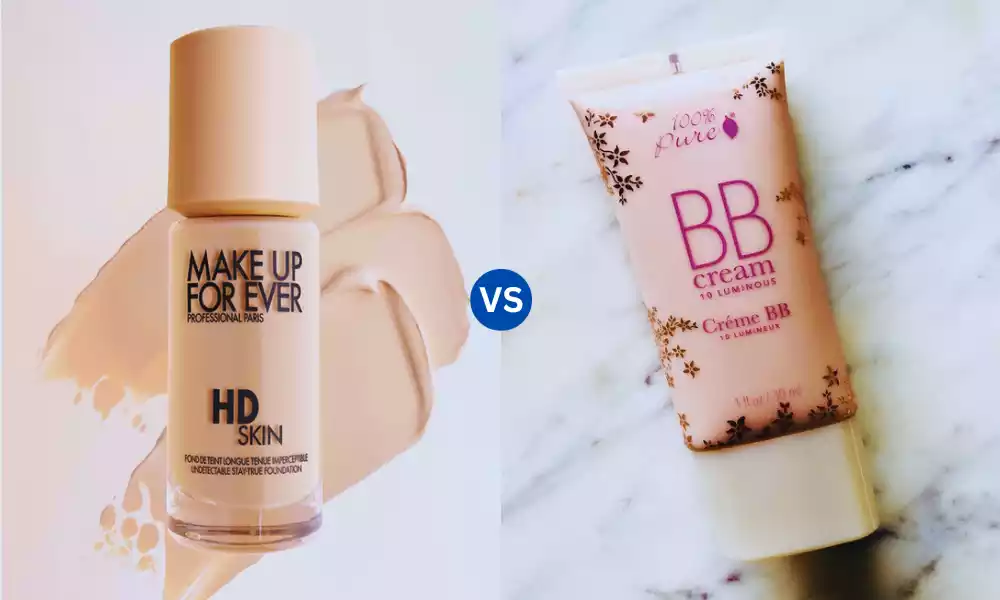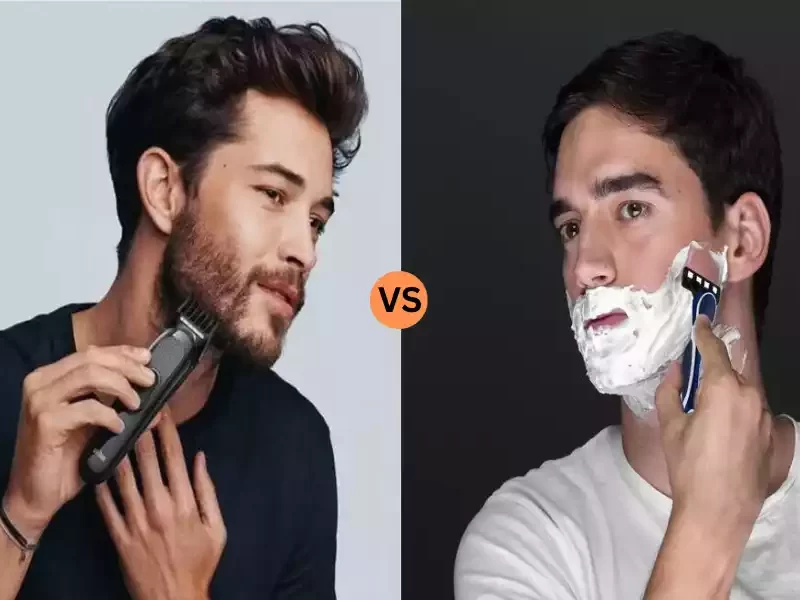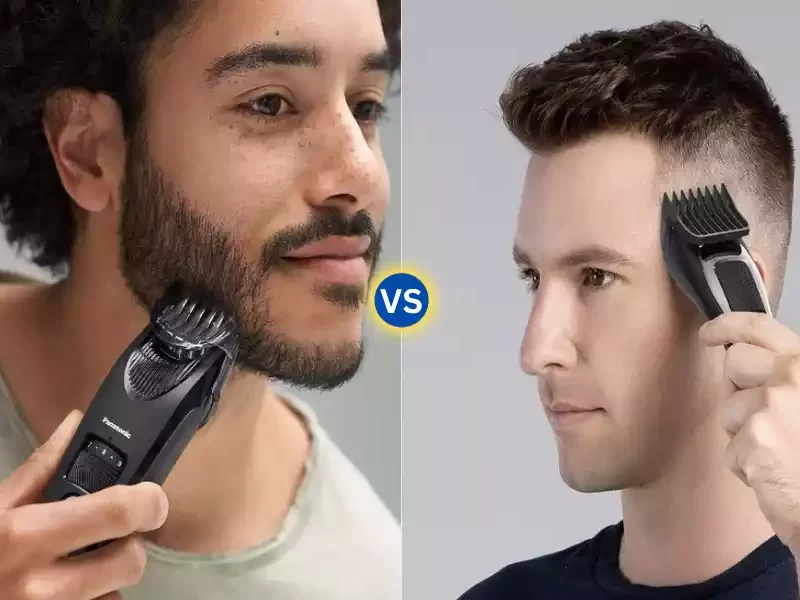Foundation and BB Cream are two popular makeup products used to create a flawless complexion. Foundation is a cosmetic product designed to even out skin tone, providing varying levels of coverage, from sheer to full. It helps create a smooth canvas for the rest of your makeup. On the other hand, BB Cream, short for Blemish Balm or Beauty Balm, is a versatile product that combines makeup and skincare. It offers light to medium coverage while often providing additional benefits like hydration, sun protection, and skincare ingredients. Understanding the differences between these two products is essential for achieving the desired makeup look.
What is Foundation?
Foundation is a cosmetic product used in makeup to create a smooth and even base for the rest of your makeup application. It is typically applied to the face and, sometimes, the neck and decolletage to even out skin tone, conceal imperfections, and provide a uniform canvas for other makeup products.
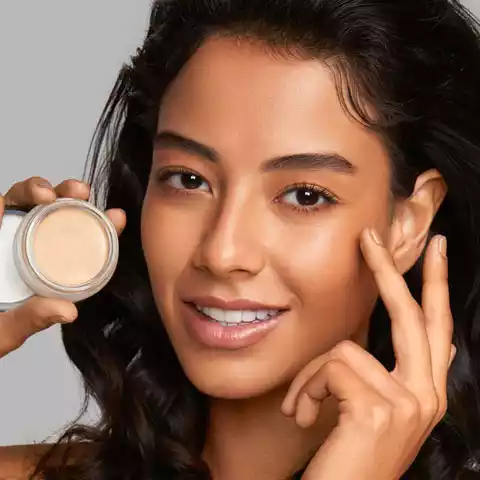
Key characteristics of foundation include:
- Coverage: Foundation comes in various coverage levels, ranging from sheer to full coverage. Sheer foundations provide a natural look and allow some of your natural skin to show through, while full-coverage foundations provide a more opaque finish, covering blemishes and imperfections effectively.
- Texture: Foundations are available in different formulations, such as liquid, cream, powder, and stick. The choice of texture can depend on personal preference and skin type.
- Shade and Undertone: Foundations are manufactured in a wide range of shades to match various skin tones. They also come with different undertones (warm, cool, neutral) to complement different undertones in the skin.
- Finish: Foundations can have different finishes, including matte (no shine), satin (a subtle glow), and dewy (a luminous and radiant finish). The finish you choose can impact your overall makeup look.
- Skin Type Compatibility: Some foundations are formulated to cater to specific skin types, such as oily, dry, combination, or sensitive skin.
- Longevity: Some foundations offer long-lasting formulas that resist fading or smudging throughout the day.
Foundation serves as the base upon which you can apply other makeup products like concealer, blush, bronzer, and eyeshadow. It helps create a flawless complexion and can be customized to achieve the desired level of coverage and finish for your makeup look. When choosing a foundation, it’s essential to consider factors such as skin type, undertone, and coverage needs to find the best match for your complexion.
Types of Foundation
- Liquid Foundation: Versatile and available in various finishes and coverage levels.
- Cream Foundation: Creamy texture for medium to full coverage, suitable for dry skin.
- Powder Foundation: Lightweight, often for oily skin, offers sheer to medium coverage.
- Stick Foundation: Solid, easy to apply, good for dry to normal skin.
- Mineral Foundation: Made from finely milled minerals, often for sensitive skin.
- Tinted Moisturizer: Lightweight with sheer coverage and added hydration.
- Cushion Foundation: Compact, convenient, offers light to medium coverage.
- Serum Foundation: Lightweight with skincare benefits, provides a natural finish.
- Water-Based Foundation: Lightweight, suits various skin types, and provides a natural look.
What is BB Cream?
BB Cream, short for “Blemish Balm” or “Beauty Balm,” is a versatile cosmetic product that combines the benefits of makeup and skincare. Originally developed in Germany, BB Creams gained popularity in Asia and have since become a worldwide beauty trend.
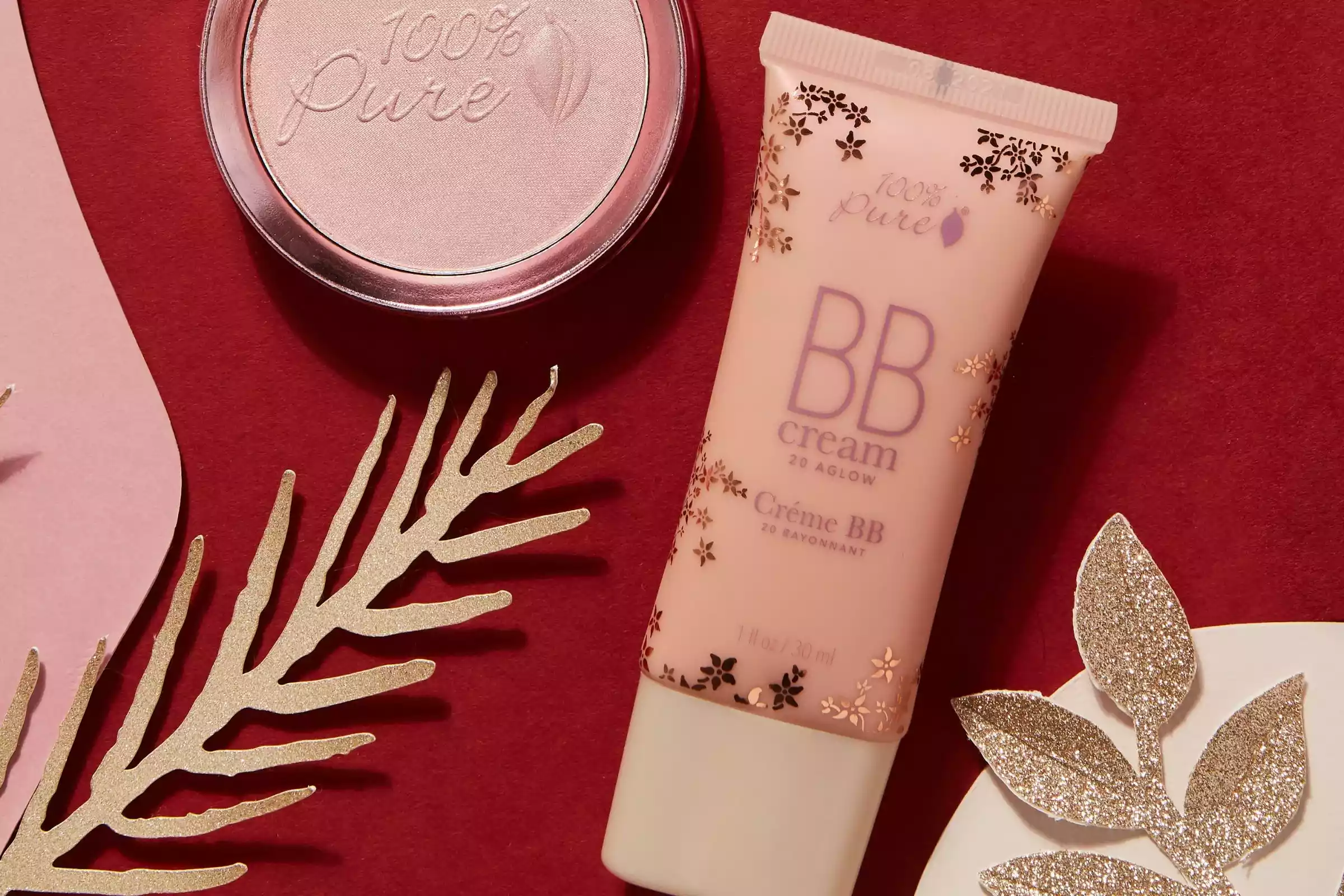
BB Creams typically offer the following features:
- Light to Medium Coverage: They provide coverage similar to a foundation but usually with a lighter and more natural finish, allowing some of your skin’s imperfections to show through.
- Skincare Benefits: BB Creams often contain skincare ingredients such as SPF (sun protection factor), moisturizers, antioxidants, and sometimes even anti-aging compounds. These ingredients are intended to improve the condition of the skin over time.
- Hydration: Many BB Creams are formulated to provide hydration, making them suitable for individuals with dry or combination skin.
- Sun Protection: Some BB Creams include sun protection to shield the skin from harmful UV rays, although the level of SPF can vary among different products.
- Versatility: BB Creams are known for their versatility, as they can be used as an all-in-one product to replace multiple steps in your makeup and skincare routine.
- Natural Look: They usually aim for a natural, dewy finish, which can give the skin a fresh and radiant appearance.
BB Creams are a popular choice for individuals who prefer a more natural look, want the convenience of a multifunctional product, or seek a lighter alternative to traditional foundation. They are available in various shades to match different skin tones and types.
Types of BB Cream
- Traditional BB Cream: Combines makeup and skincare with light to medium coverage.
- Matte BB Cream: Provides a matte finish, ideal for oily skin.
- Dewy BB Cream: Offers a radiant, glowy finish, great for dry skin.
- Tinted Moisturizing BB Cream: Lightweight with minimal coverage, hydrates the skin.
- BB Cream with SPF: Contains sun protection for daily UV defense.
- Anti-Aging BB Cream: Contains age-defying ingredients for mature skin.
- Acne-Fighting BB Cream: Includes ingredients to combat blemishes.
- Color-Correcting BB Cream: Neutralizes skin concerns like redness or uneven tone.
- Water-Based BB Cream: Lightweight, provides a natural, skin-like finish.
Comparison Table of Foundation and BB Cream
Here’s a comparison table of Foundation and BB Cream to highlight their key differences:
| Aspect | Foundation | BB Cream |
|---|---|---|
| Purpose | Creates an even base, conceals imperfections, and provides varying levels of coverage | Combines makeup and skincare, offering lighter coverage with added skincare benefits |
| Coverage Levels | Sheer, Medium, Full | Light to Medium |
| Texture/Consistency | Liquid, Cream, Powder, Stick | Creamy, Lightweight |
| Shade Range | Wide range of shades and undertones | Available in a limited range of shades |
| Finish | Matte, Satin, Dewy, Various Finishes | Natural, Dewy |
| Added Benefits | Typically focuses on coverage | Often includes SPF, hydration, and skincare ingredients |
| Skin Type | Suitable for various skin types | Generally suitable for most skin types |
| Longevity | Varies depending on the formulation | Tends to be lightweight and may require touch-ups |
| Use Cases | Ideal for full makeup looks | Suitable for everyday, natural makeup |
| Makeup Routine | Requires additional skincare steps | Can streamline the makeup and skincare routine |
| Complexion Goal | Provides a flawless, polished look | Offers a more natural, fresh appearance |
| Customization | Customizable coverage and finish | Offers a simplified approach to makeup |
There can be variations within each category of products, and individual products may have unique features that deviate from the general characteristics mentioned above. The choice between Foundation and BB Cream often depends on personal preferences, skin type, and the desired makeup look.
How to Apply Foundation
Applying foundation correctly is essential for achieving a flawless makeup base.
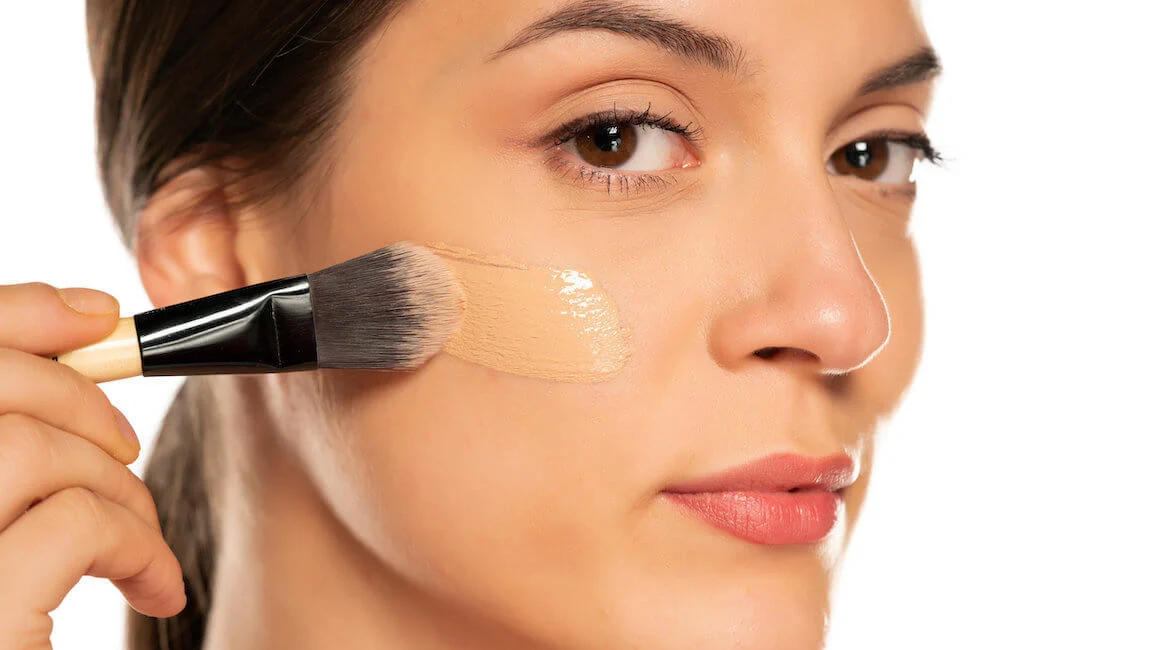
Here’s a step-by-step guide on how to apply foundation:
Prep Your Skin
- Cleanse and Moisturize: Start with a clean and moisturized face. Cleansing removes dirt and excess oil, while moisturizing helps create a smooth canvas for the foundation. Allow your moisturizer to absorb for a few minutes before proceeding.
Select the Right Foundation
- Choose the Correct Shade: Pick a foundation shade that matches your skin tone. Test the color on your jawline or the back of your hand to ensure it blends seamlessly with your skin.
Application
- Primer (Optional): If you use a makeup primer, apply it after moisturizing. Primer can help create a smoother surface for foundation and prolong its wear.
- Use the Right Tools:
- Fingers: You can use your clean fingers for a natural, sheer coverage. Make sure your hands are clean.
- Makeup Sponge (Beauty Blender): Dampen the sponge and use a stippling motion (lightly bouncing) to apply the foundation. It provides a seamless, airbrushed finish.
Foundation Brush: A flat foundation brush can give you precise control and full coverage. Use gentle strokes to apply and blend.
- Dot or Apply Strokes:
-
-
- Dispense a small amount of foundation onto your hand, a palette, or directly onto your face (forehead, cheeks, nose, and chin).
- Use your chosen tool to blend the foundation into your skin. Start in the center of your face and blend outward for an even application.
-
Blending
- Blend Thoroughly: Blend the foundation into your skin, ensuring there are no harsh lines or uneven patches. Pay attention to areas like the jawline and hairline to avoid noticeable edges.
Build Coverage (If Needed)
- Additional Layers (Optional): If you desire more coverage, you can apply a second layer of foundation only to the areas that need it. Avoid overloading your entire face.
Set the Foundation
- Setting Powder (Optional): To increase the longevity of your foundation and control shine, you can apply a setting powder lightly over the foundation.
Finishing Touches
- Apply the Rest of Your Makeup: Once the foundation is in place, you can proceed with your makeup routine, including concealer, blush, bronzer, eyeshadow, eyeliner, and lipstick.
Setting Spray (Optional)
- Finish with Setting Spray: To lock your makeup in place and provide a natural finish, you can use a makeup setting spray.
Tips:
- Blend well around the hairline, jawline, and neck to avoid a noticeable line of demarcation.
- Blend the foundation down to your neck to ensure a seamless transition between your face and neck.
- Use a makeup sponge or beauty blender to help blend the foundation into areas with fine lines or texture.
- Remember that less is often more. Start with a small amount of foundation, and you can always add more if needed.
- Natural lighting is the best for color matching, so try to apply your foundation near a window or in natural light.
Practice and experimentation will help you find the best technique for your skin type and desired makeup look.
How to Apply BB Cream
Applying BB Cream is a relatively simple process, and it’s a great choice for those who prefer a natural, lightweight makeup look with added skincare benefits.
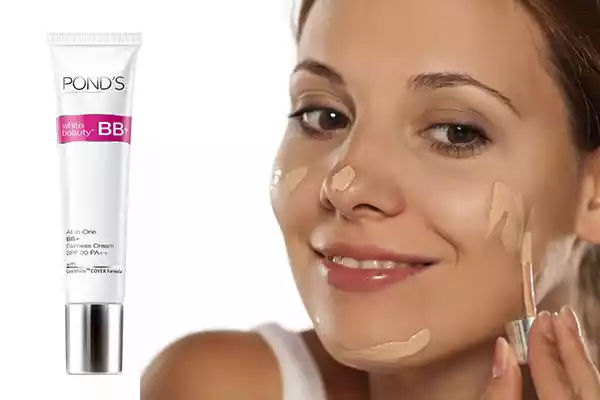
Here’s a step-by-step guide on how to apply BB Cream:
Prep Your Skin
- Cleanse and Moisturize: Start with a clean and well-moisturized face. Cleansing removes dirt and excess oil, while moisturizing helps create a smooth canvas for the BB Cream. Allow your moisturizer to absorb for a few minutes before proceeding.
Select the Right BB Cream
- Choose the Correct Shade: Pick a BB Cream shade that closely matches your skin tone. Test the color on your jawline or the back of your hand to ensure it blends seamlessly with your skin.
Application
- Primer (Optional): If you use a makeup primer, apply it after moisturizing. Primer can help create a smoother surface for BB Cream and enhance its longevity.
- Use the Right Tools:
- Fingers: BB Cream is easy to apply with your clean fingers for a natural, sheer coverage. Ensure your hands are clean.
- Makeup Sponge (Beauty Blender): Dampen the sponge slightly and use a stippling motion (lightly bouncing) to apply the BB Cream. This technique provides a seamless, airbrushed finish.
Foundation Brush (Optional): A flat foundation brush can provide precise control and light coverage. Use gentle strokes to apply and blend.
- Dot or Apply Strokes:
-
-
- Dispense a small amount of BB Cream onto your hand or directly onto your face (forehead, cheeks, nose, and chin).
- Use your chosen tool to blend the BB Cream into your skin. Start in the center of your face and blend outward for an even application.
-
Blending
- Blend Thoroughly: Blend the BB Cream into your skin, ensuring there are no visible lines or uneven patches. Pay attention to areas like the jawline and hairline to avoid noticeable edges.
Set the BB Cream (Optional)
- Setting Powder (Optional): If you want to control shine and extend the wear of your BB Cream, you can lightly dust a translucent setting powder over your face.
Finishing Touches
- Apply Other Makeup (Optional): Depending on your preference, you can apply other makeup products like concealer, blush, bronzer, eyeshadow, eyeliner, and lipstick.
Setting Spray (Optional)
- Finish with Setting Spray: To lock your makeup in place and provide a natural finish, you can use a makeup setting spray.
Tips:
- Blend the BB Cream thoroughly around the hairline, jawline, and neck to avoid noticeable lines of demarcation.
- Blend the BB Cream down to your neck to ensure a seamless transition between your face and neck.
- Use a makeup sponge or beauty blender to help blend the BB Cream into areas with fine lines or texture.
- BB Cream provides light to medium coverage, so it’s perfect for a natural look. If you need more coverage in specific areas, you can apply a concealer over those spots.
- Less is often more with BB Cream. Start with a small amount, and you can always add more if needed.
- Natural lighting is ideal for color matching, so try to apply your BB Cream near a window or in natural light.
BB Cream is designed to be user-friendly and forgiving, making it an excellent choice for those new to makeup or those who prefer a simple, natural appearance.
Importance of Choosing the Right Base Makeup
Choosing the right base makeup, which includes foundation, BB cream, or any product used to create an even canvas for your makeup, is of utmost importance in the world of cosmetics and skincare. Here are several reasons why selecting the right base makeup is crucial:
- Enhances Skin Appearance: The right base makeup can improve the overall appearance of your skin by concealing imperfections, evening out skin tone, and providing a smooth surface. This sets the stage for the rest of your makeup application.
- Boosts Confidence: A flawless base can boost your confidence, helping you feel more comfortable and self-assured in your skin.
- Makes Makeup Last Longer: The right base makeup, when chosen and applied correctly, can make your makeup last longer throughout the day or night. It helps prevent makeup from sliding off or becoming patchy.
- Customizable Coverage: Different base makeup products offer varying levels of coverage, from sheer to full. This allows you to customize your makeup look according to your preferences, whether you want a natural appearance or full coverage for special occasions.
- Complements Your Skin Type: Base makeup products are available for various skin types, including oily, dry, combination, and sensitive. Choosing a product that suits your skin type can help maintain skin health and comfort.
- Protects Against Sun Damage: Some base makeup products, such as BB creams and foundations with SPF, provide protection against harmful UV rays, helping to prevent premature aging and skin damage.
- Hydration and Skincare Benefits: Certain base makeup products, like BB creams, contain additional skincare benefits such as hydration, antioxidants, and anti-aging ingredients. These can contribute to healthier-looking skin over time.
- Creates a Flawless Canvas: Base makeup can help minimize the appearance of fine lines, wrinkles, and pores, creating a smoother and more youthful complexion.
- Photography and Special Events: For occasions like weddings or photoshoots, choosing the right base makeup is essential to ensure your makeup looks flawless in photographs and under different lighting conditions.
- Skin Sensitivity: Individuals with sensitive skin need to be particularly careful when choosing base makeup to avoid irritation or allergic reactions. Selecting hypoallergenic or dermatologist-tested products can help.
- Evens Out Skin Tone: Base makeup helps mask redness, discoloration, and uneven skin tone, providing a uniform canvas for the application of color cosmetics.
- Personal Expression: Base makeup allows you to express your personal style and creativity in the world of makeup artistry.
- Skincare Routine Integration: Some base makeup products can streamline your skincare routine by combining makeup and skincare benefits in one product.
Choosing the right base makeup is crucial for achieving the desired makeup look, maintaining skin health, and boosting self-confidence. It’s essential to consider your skin type, coverage needs, and preferences when selecting the appropriate product. Additionally, proper application techniques ensure that your base makeup blends seamlessly into your skin for a natural and flawless finish.
Conclusion
Foundation and BB Cream are both essential components of a makeup routine, each offering distinct benefits. Foundation provides varying levels of coverage and is ideal for achieving a polished and customizable makeup look. On the other hand, BB cream combines makeup and skincare, offering a lighter, more natural appearance with added benefits such as hydration and sun protection.
The choice between the two depends on individual preferences, skin type, and the desired makeup outcome, making them valuable tools for achieving a flawless complexion.

